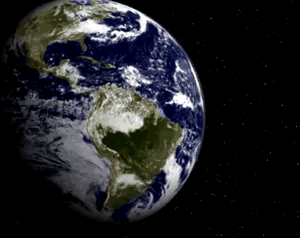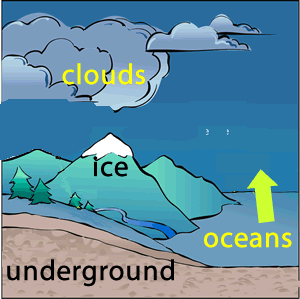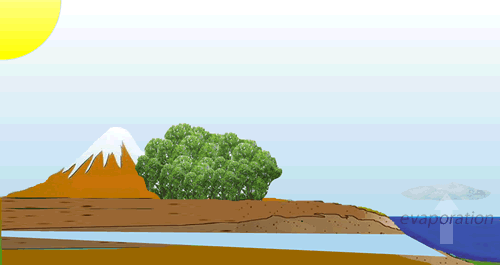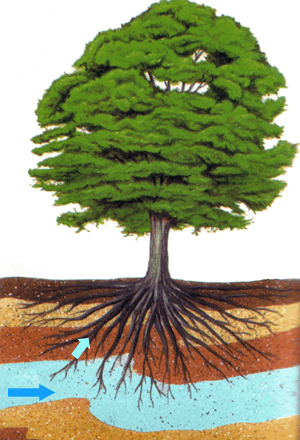The water cycle.
Water is the most precious, life sustaining resource on Earth. But how did it get to Earth? One of the most popular theories is that, shortly after the Earth formed, millions of comets and asteroids laden with water slammed into the planet releasing their contents to form the oceans that are present now. Water is not a renewable commodity and what is here must be recycled. In most cases water is the primary constituent of living things and forms an important solvent for the nutrients and minerals needed by their cells.

Water is stored in several places on Earth. It is stored in the oceans, lakes and rivers, clouds, ice and in the ground. Clouds can transport vast quantities of water quickly over great distances. This is why cloud formations in certain regions within our atmosphere are known as "rivers in the sky". Although the amount of water on Earth stays the same, it is recycled from one storage area to another in a process called the water cycle. The water cycle is driven by energy from the Sun.

The water cycle serves a number of roles, it purifies water, replenishes the freshwater on land and transports soluble minerals to different parts of the Earth.


Large forests contribute greatly to the movement of water through the water cycle. Through a process called transpiration trees contribute 10% of the water in our atmosphere, the rest comes from evaporation from oceans and land.
Trees, literally, suck water out of the ground and force it up the stem to the leaves where it escapes into the atmosphere, as water vapour, through microscopic pores called stomata. This process is shown on the right.

1) The movement of water between different storage places on Earth is known as the
2) Which of the following requires an input of energy?
3) In which form can large masses of water travel quickly over long distances?
4) During which phase can the water cycle purify water?
5) The water on Earth is
6) Condensation is the process where a gaseous substance turns into a gas when cooled. Which phase in the water cycle represents condensation?
7) Evaporation
8) When rain water falls to the earth it slowly sinks downwards through the ground to underwater tables. This process is known as
9) Through transpiration, trees contribute greatly to the amount of water found in the
10) Which process is not part of the water cycle
11) As part of the water cycle water is not stored
12) The water cycle has an impact on
13) Water is a solvent for nutrients in the soil.
a)
What is a solvent?
b)
Why is it important for plants for water to act as a solvent?
14) Consider the video on the right of the water cycle.
a) What is required for evaporation to occur?
b) Why is it that clouds form during the day?
c) What is happening during condensation for the clouds to go dark grey in colour?
d) Why do you think it rains when the clouds are forced to rise over mountain ranges?
e) Notice how the sea water moves inland. What would happen if water did not flow beneath the ground to towards the sea thus forcing sea water back towards the sea?
f) Why is there no cloud formation at night?
Continue with Human impact on the Water Cycle.
Continue with the use of the Water Cycle to generate power.
Continue with an activity on transpiration